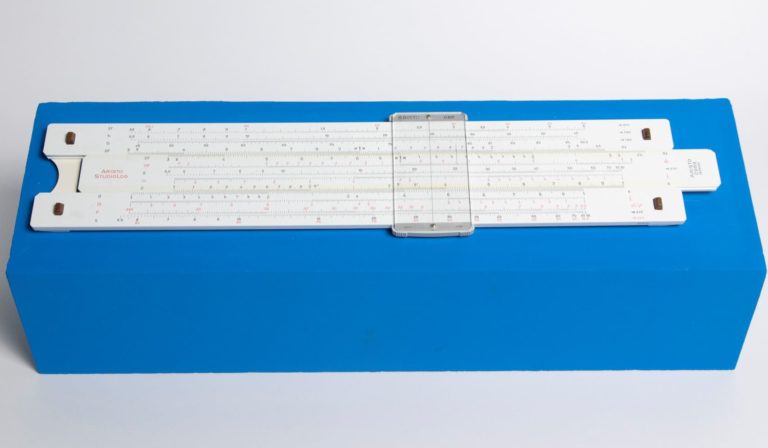Exposition
Technological Evolution
Rule Calculus

( 1614 ) John Napier discovered that it was possible do multiplications and divisions by adding and subtracting logarithms. This saved calculation processing time, but it was very tedious.
Edmund Gunter proposed drawing a numbered line in which the positions of numbers were proportional to their Logarithms. This led to the slide rule. The computational power of these devices increased over time: they could be used to multiply, divide, calculate powers, square roots, trigonometric functions, logarithms and interest and amortization rates.
The slide rule was a mechanical device commonly used to perform calculations in the late 17th century. It survived for 300 years until the appearance of the pocket scientific calculator in the 1970s.
Con el tiempo, la potencia de cálculo de estos dispositivos fue aumentando: se podía multiplicar, dividir, calcular potencias, raíces, funciones trigonométricas, logaritmos y calcular intereses y amortizaciones.
A finales del siglo XVII la regla de cálculo era un instrumento mecánico de uso común para realizar cálculos. Sobrevivió durante 300 años, hasta la aparición en los años 70 de las calculadoras científicas de bolsillo.
